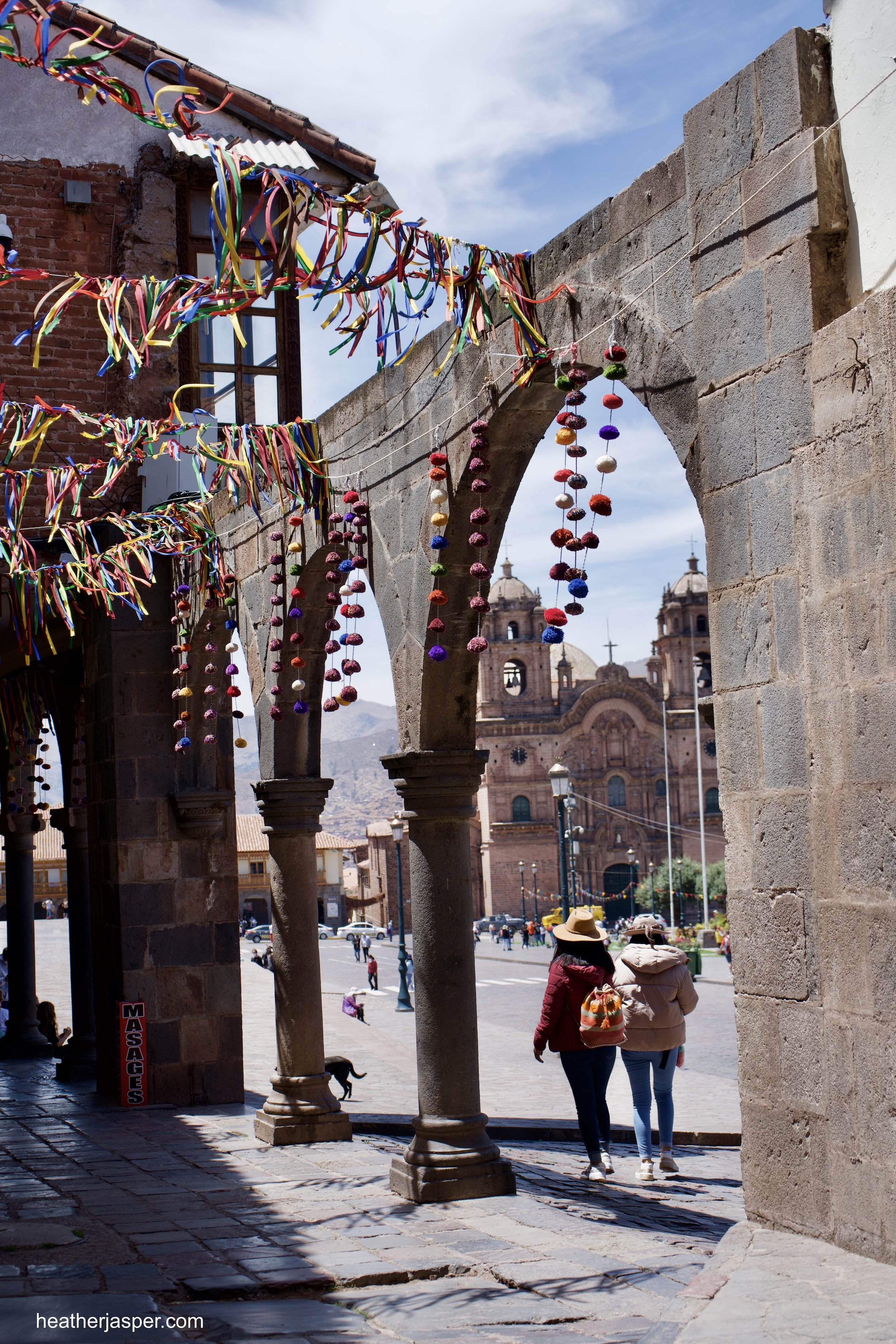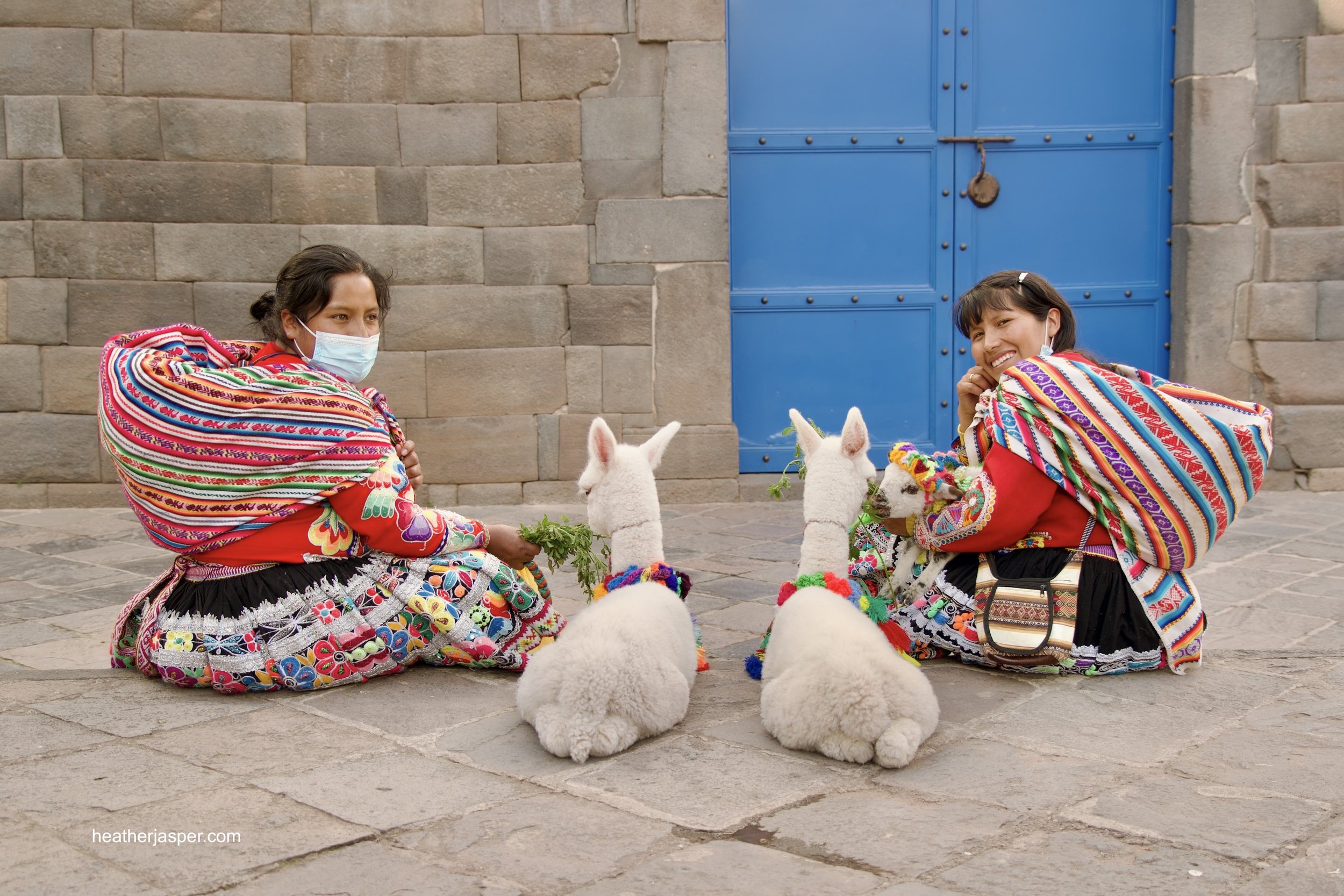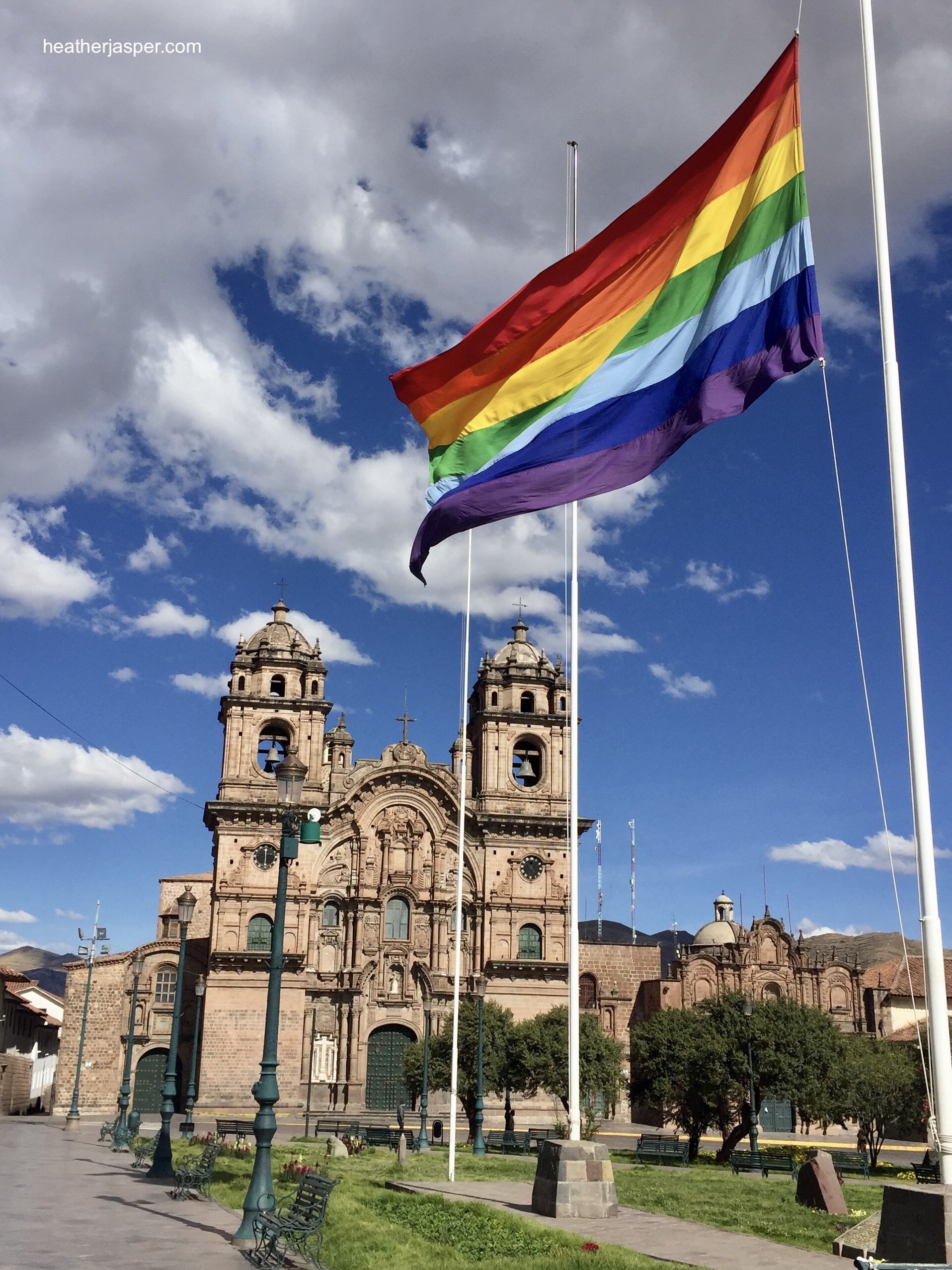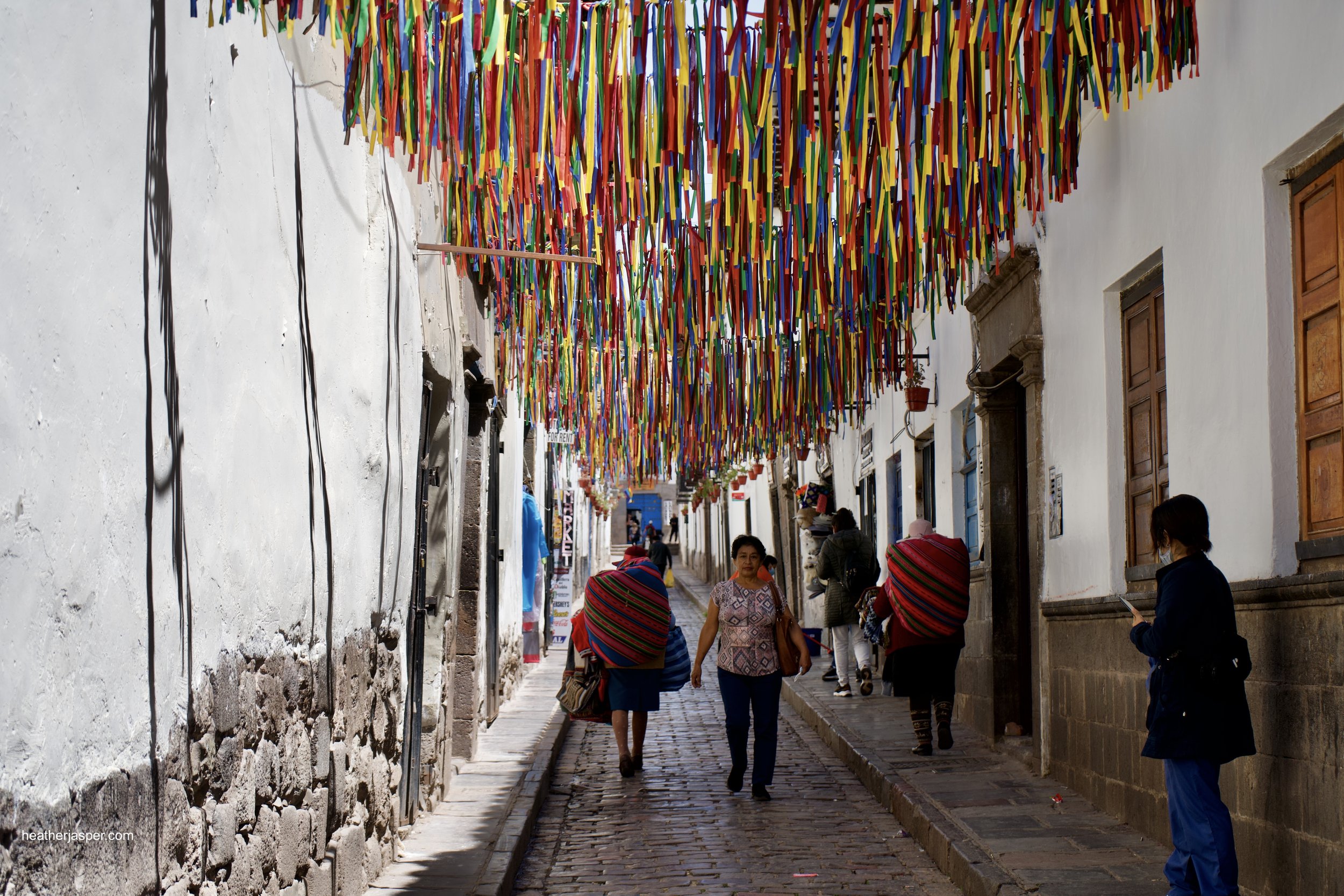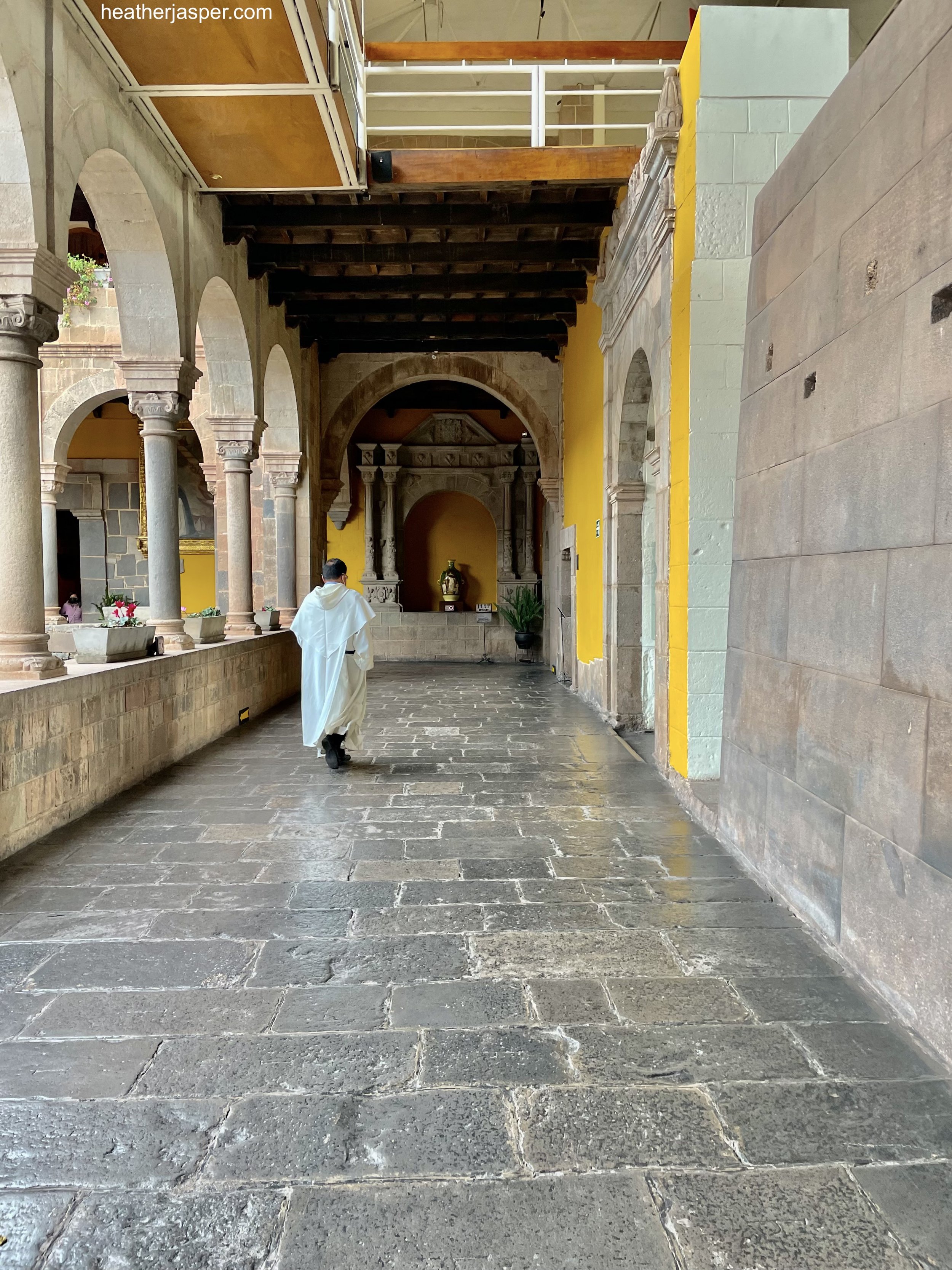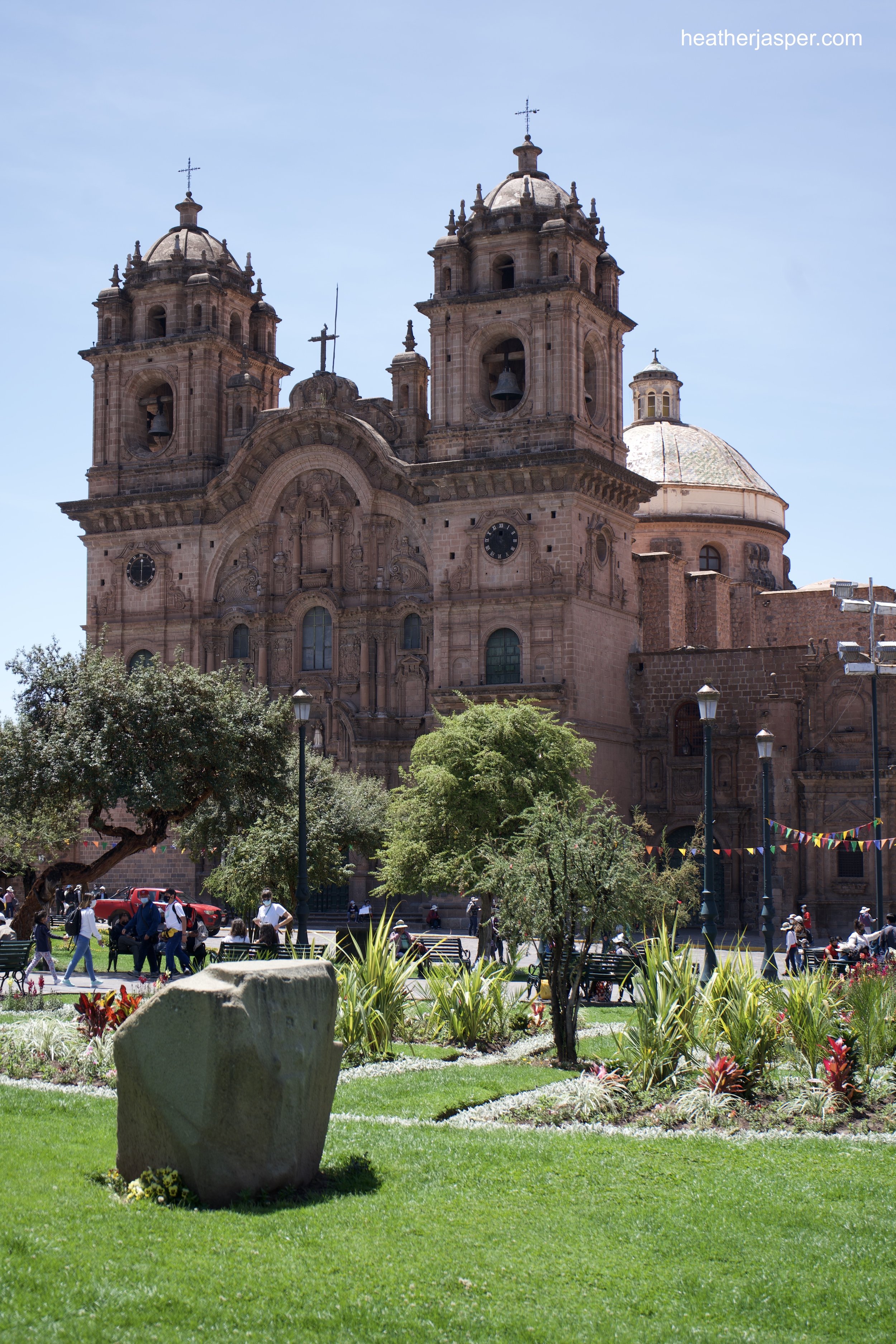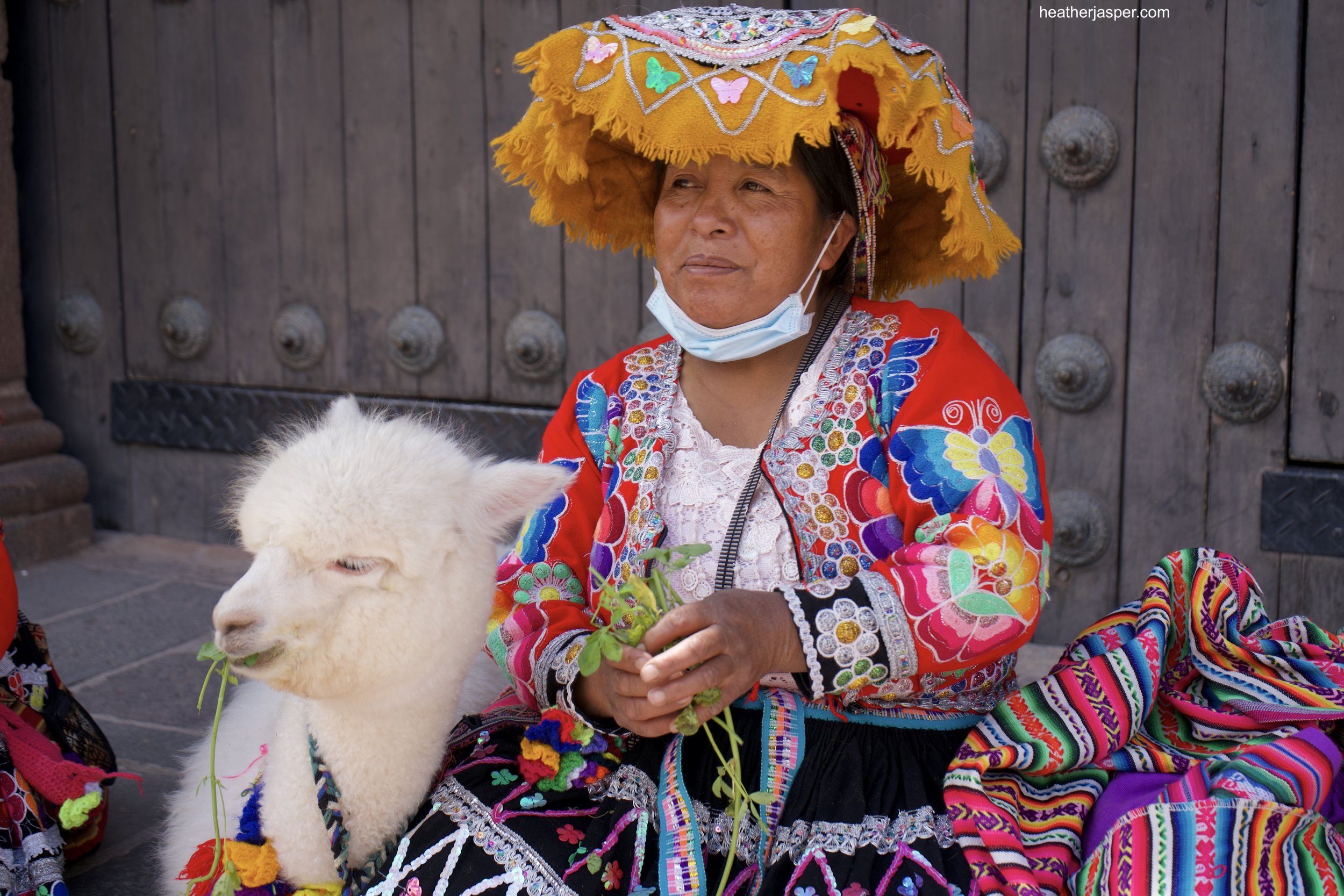You must have comprehensive travel insurance if you come to Peru in 2023.
I’m a SafetyWing Ambassador and highly recommend their services for both health and travel insurance.
If you’ve looked at any of my content, you know that I love Peru.
I’ve lived full time in Cusco since 2019 and work as a digital nomad around South America when I’m not in Cusco.
However, Peru went through a rough time and transportation was affected from December 2022 through February 2023. The protests stopped in February, but could resume later in 2023. Travelers should keep their travel plans as flexible as possible.
Travel to Peru is still safe.
Travelers are not targeted for crime due to the unrest. The protests in Peru are a political struggle, which is focused on the capital of Lima. However, protesters do occasionally block roads in and near the Cusco region. Your plans should be as flexible as possible.
Read about SafetyWing’s comprehensive coverage here.
This is Leonarda and her alpaca named Blanca. She also lives in Cusco and told me she feels safe here.
Travel delays can happen anywhere, but in Peru in 2023 they are more likely than usual.
A road block or train strike could prevent you from travel between Cusco and Machu Picchu, though rarely for more than one day.
Political evacuation?
It’s extremely unlikely. Even during the worst of the protests in December and January it would NOT have been necessary to evacuate from Cusco. Still, it’s good to have evacuation covered by insurance.
Machu Picchu reopened after being closed from January 21 to February 15, 2023. The root of the closure was that the people of the town of Aguas Calientes want politicians in Lima to be held accountable for a long list of troubles.
Aguas Calientes is the town at the foot of Machu Picchu. If you hike the Inca Trail, you will visit Machu Picchu and then descend to Aguas Calientes to catch the train back to Ollantaytambo and Cusco. If you hike any other trail, you will end up in Santa Teresa or Ollantaytambo, from which you will take the train or walk to Aguas Calientes.
Please read this excellent article by the Washington Post about how and why the townspeople of Aguas Calientes decided together to close Machu Picchu and keep it closed until they got results.
That means if you had bought tickets to Machu Picchu for any date between January 21 and February 14, you did not get to visit the archeological site. This is exactly the kind of reason you need comprehensive travel insurance for Peru in 2023.
I need to reiterate that Peru is still a safe place for travelers and tourists. The conflict is between the people and the government, often represented by the police during protests. If you are in Peru and see a political protest, the best advice is to walk the other way. In the age of digital content (and especially for us content creators) it is SOOO tempting to walk towards the protest and just get a few pictures. However, it is safest to avoid all protests. If the police decide that it’s getting out of hand (a very subjective term) then they may retaliate with tear gas or worse.
If you are concerned with the plight of Peruvians (as I am) and want to do something to help the world understand what’s happening (as I do), please read everything you can find from reputable news sources. The BBC has covered the crisis extensively, as has CNN and the previously cited Washington Post. The New York Times has also written several articles, though I disagree with most of what their editorial staff wrote in an op-ed.
My two cents on the matter:
This goes back to the colonial system that was set up to exploit people in the countryside and benefit the people in the cities. That system was never truly destroyed in Peru. The mostly indigenous peoples of the Andes and the Peruvian Amazon do not have adequate (and certainly not equal) access to healthcare and education. They do not have adequate communication or transportation services.
The more families in rural areas send their children to cities for better access to education, the more they see what they have a right to in terms of healthcare and education. They are increasingly aware of their rights and how horribly they have been ignored by the Peruvian government – for hundreds of years.
Why now?
In December 2022, President Pedro Castillo was impeached and imprisoned. He was a highly inexperienced politician who had never previously held any elected office. He had been a rural schoolteacher in the region of Cajamarca, in the north of Peru. His political base is in southern Peru, especially in the indigenous populations in the regions of Cusco and Puno.
Thousands of people poured into the streets to protest Castillo’s impeachment and imprisonment. In several places, those protests were met with undue force. Protestors who threw rocks at police were met with bullets and over 50 people died.
How did Peru get here?
In March 2018, elected President Pedro Pablo Kuczynski (PPK) resigned, kicking off a revolving door of presidents. His vice president, Martín Vizcarra, was sworn in as President. He was a much more popular president than PPK and generally held the support of most of Peru’s population. In a struggle against congress to pass a package of anti-corruption laws in 2020, he dissolved congress and called for new elections. This is entirely legal under Peru’s constitution.
However, the new congress didn’t like Vizcarra much more than the previous congress. (Personally, I was a big fan of Vizcarra and how he handled the Covid-19 pandemic. Read about what I did in 2020 in Peru here.)
In November 2020, congress removed Vizcarra and swore in Merino, the president of the congress. (Under Peru’s constitution, the third in line for president after the vice president, is the president of the congress). Manuel Arturo Merino was president for six days, from November 10-15, 2020. (My birthday is November 14 and that was not a very happy day).
Peruvians poured into the streets to protest Merino, despite the Covid-19 pandemic quarantine restrictions. According to my Peruvian friends and neighbors, Merino had the reputation of being the most corrupt of all the corrupt politicians in Peru. When he resigned, Francisco Sagasti was sworn in as president. He was the third president that week.
Pedro Castillo won less than 20% of the vote in the 2021 general elections, but that was enough for him to run in the second round. The other candidate who got enough votes in the primary elections was Keiko Fujimori. Her name, and her family, have a long and complicated history in Peru. Her father Alberto Fujimori was president of Peru from 1990 to 2000. He is currently in jail, convicted for 35 crimes, 12 of which were crimes against humanity. (Not the card game, the real bloody thing). Understandably, when Keiko said that one of her campaign promises was to let her father out of jail, many Peruvians voted for Castillo. (It’s MUCH more complicated than that but I’m not going to rehash the election now).
Where does that leave Peru now?
These are uncertain times in Peru, to say the least. While I still plan to live in Cusco and feel safe going about my life, I have to accept that transportation will be complicated on days that there are protests. I might not get to go everywhere I want to go in 2023. (I want to finally visit Kuélap and Chavín de Huántar).
I still encourage people to come to Peru!
Most tourist destinations are open and you will now have them to yourselves. Still, you must have comprehensive travel insurance and you must be prepared for your plans to change. Keep everything flexible, and you’ll have a great time!
Ninoska Montufar Becerra has been documenting the protests in Cusco since they began.
Follow her on Instagram to see more beautiful shots of solidarity from the people who live in the mountains of the Cusco region.
